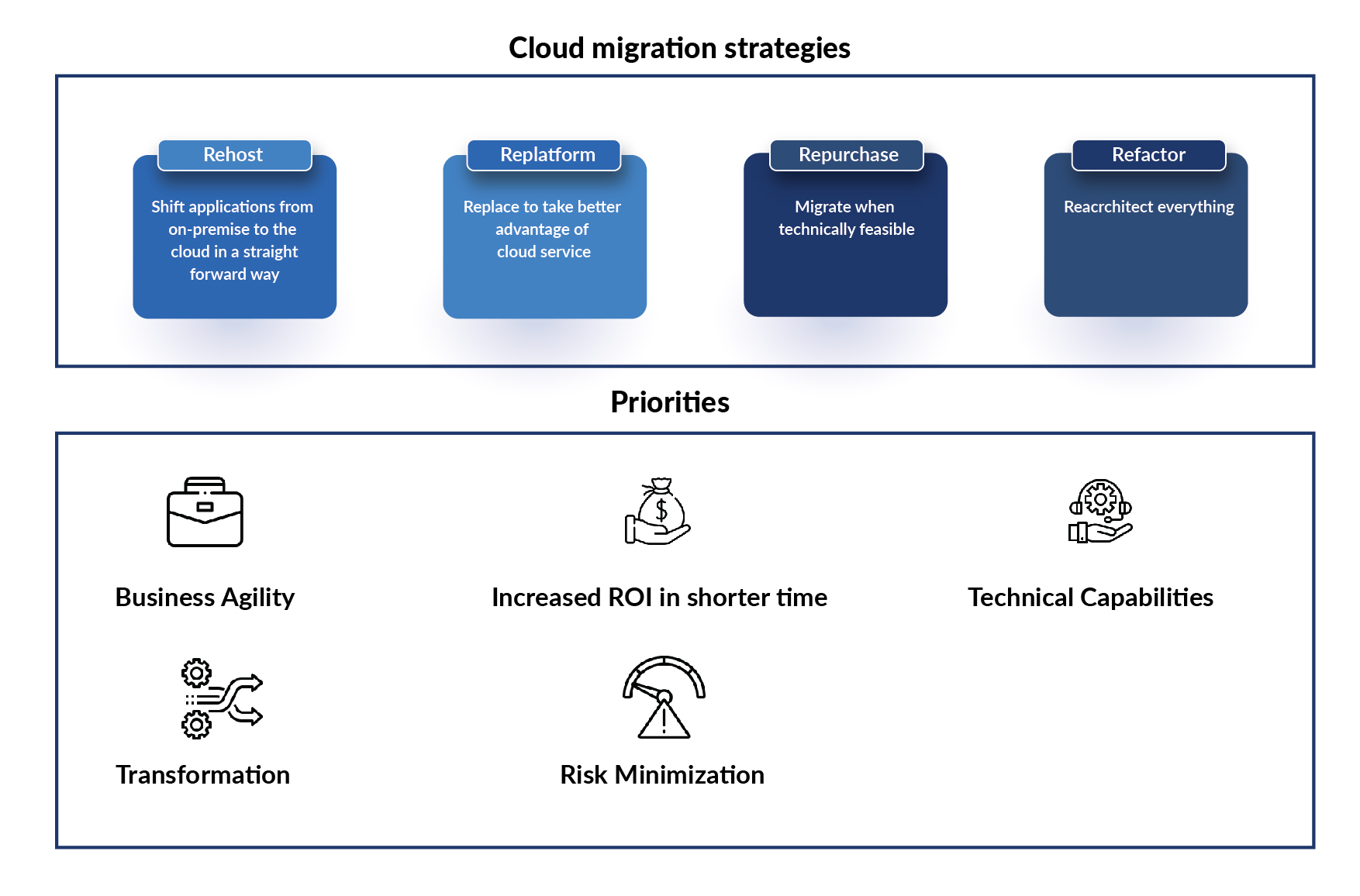
All-In-One Scriptless Test Automation Solution!
All-In-One Scriptless Test Automation Solution!
Are you deciding to move your business to the cloud? One of the top challenges in 2022 is transforming your cloud migration blueprints to a new set of customer requirements and expectations. Organizations that target to reap the benefits of the cloud have to realize that a technology change is enough for a successful cloud transformation. Companies already proceeding to the cloud may understand the complexities and challenges well.
Gartner’s 2022 strategic trends research highlights that, by 2025, cloud-native platforms will serve as the foundation for more than 95% of new digital initiatives — up from less than 40% in 2021.
Successful cloud adoption requires a lot of attention from your business. If your business isn’t prepared to face cloud migration challenges, it could be challenging for you and your data. When planning your cloud migration, you need to consider both your business-critical challenges and how you will solve them.
Current methodologies to scaling cloud are often top-down-driven, resulting in increased go-to-market and operational challenges. Instead, I&O leaders should embrace a flexible approach by collaborating with employees and checking their cloud journey status.
Sun Technologies takes an employee-centric, rather than business-centric, approach to scaling the company’s use of cloud capabilities.

Here are few common challenges of cloud transformation that can obstruct your efforts.
Instead of harnessing a single cloud, businesses today are using many public and private clouds. Leveraging multiple clouds enhances data redundancy and availability and eliminates vendor lock-in. Governing a multi-cloud environment often obstructs their management. The unpredictability of the data migration from one cloud to another increases the potential for data loss.
A multi-cloud setup throws many other difficulties and challenges, which IT teams have to deal with. Opting right solutions such as automation, auto-scaling features, cloud cost management solutions helps manage a multi-cloud environment.
The cloud offers numerous advantages to enterprises; however, it also comes with its own security issues and concerns. Cloud-based infrastructure is entirely different from an on-premise data center, and conventional security tools. The strategies are not always capable of securing it efficiently. Businesses of all sizes use the cloud extensively.
The cloud security management strategies are inadequate for securing the cloud-based infrastructure of many companies. This highlights the importance of reducing cloud security threats by removing present cloud vulnerabilities.
Organizations need to think about the other factors when considering the modernization of their IT systems, including tools, cost, technology, and business requirements. However, the most crucial one focuses on integrating any modern technology into its current IT stack. Thence integration technology is so essential to any IT modernization project.
Businesses increase their data exchange capabilities, improve customer relationships, and minimize the risk of errors by merging the integrations among your business systems. They must ensure that they can migrate to the cloud without hampering current business workflows and processes.
A cloud strategy defines how the cloud will rebuild your existing workflows, processes, and business operations in common. It should be based on your business goals for cloud adoption. It also determines how your enterprise will function once the transformation is accomplished. Mainly, it gives detailed information on everything that will be transformed by the successful adoption of the cloud.
Cloud cost optimization continues to be a serious and significant concern no matter where you are in your cloud transformation journey. As businesses move huge workloads to the cloud, it’s effortless to neglect the associated costs
. Adopting cloud services provides powerful agility benefits, but an optimal plan for managing cloud costs is vital. Hence, it is necessary to optimize cost to improve return on investment (ROI) and minimize TCO.pBusinesses and Product owners are now focusing on optimizing their cloud investments to leverage cloud services, maximize ROI, and put their business in the best structure.
Cloud Expertise: Developing and retaining cloud experience needs continuous effort in the competitive world
Collaboration: Finding and resolving “what goes where” confusion is critical to ensure a successful cloud strategy
Knowledge Gaps: Understanding and analyzing every cloud employee and assigning tasks is critical in reducing cloud migration risks.
Cost Optimization: Cross-functional collaboration is vital in optimizing cloud costs

Areas I&O leaders must focus on to optimize cloud infrastructure.
It takes the right proposition of intelligence and technology to drive a successful digital transformation. As the shift to the cloud accelerates, customers are looking for expert assistance with IT transformation. They need end-to-end services for applications that yield agility. They realized the potential of the DevOps approach to support continuous integration and delivery for expected business results.
In order to support continuous integration and delivery and to overcome challenges, companies require the right technology and strategy. An effective cloud process can improve the overall performance. However, businesses must first select the best approach and maintain up-to-date with the most recent technology and innovations.
Train your team for all the essential digital and technical skills. If you do not find the talent internally, look out for a trustable business partner who can assist you in your transformation process. Select the right technologies and tools that are in a row with your goal and growth strategy.
Explore our proven cloud success

Vaidy is an experienced lead Solutions Architect heading sales and project delivery for Cloud (AWS, Azure), DevOps and legacy Modernization projects with a demonstrated history of working in the information technology and services industry. He is a strong engineering professional with a Master of Science (MS) focused in Computer Software Engineering from BITS Pilani. He has the capability to manage bigger teams and generate revenue through new Sales and Account Mining.
Optimize and Improve your Cloud Efficiency with us!
We help you understand your cloud goals.